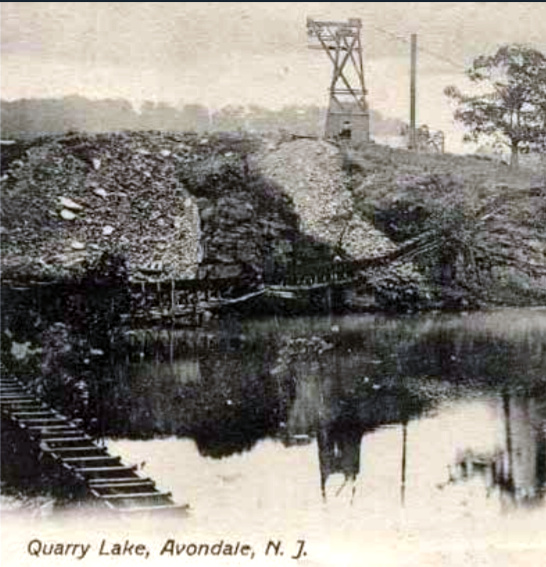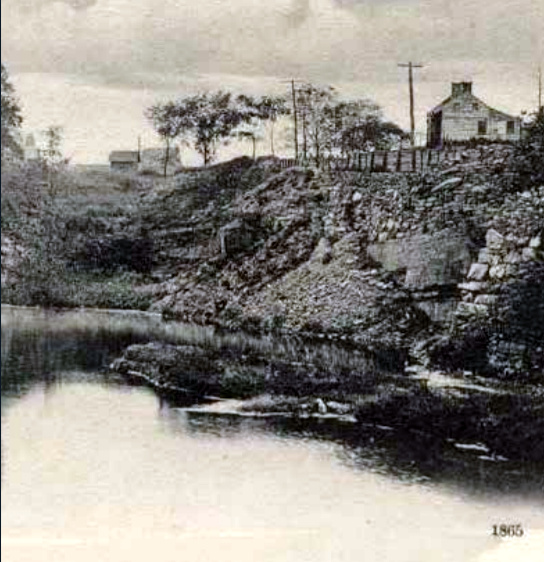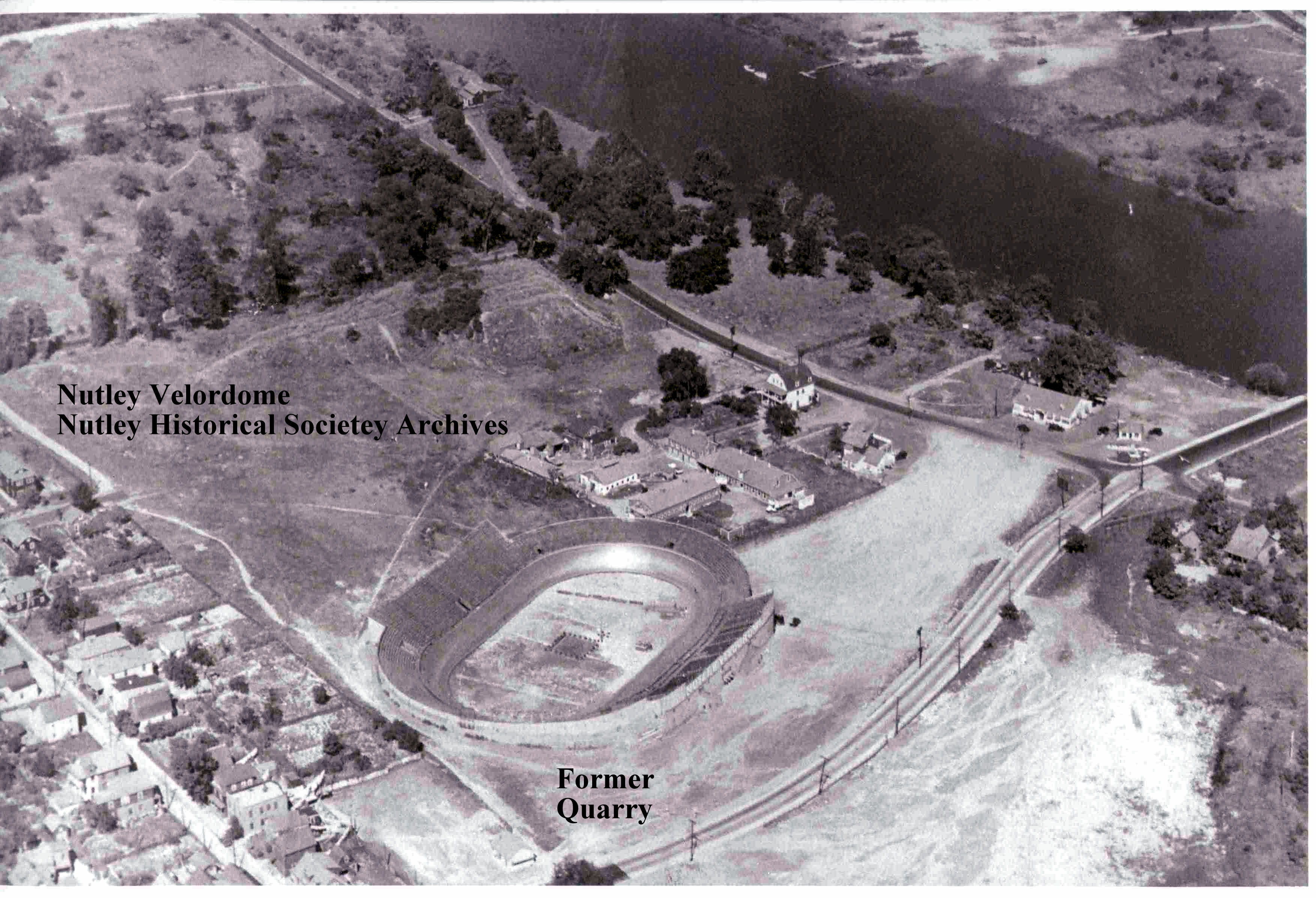When Nutley, N.J., Was a Quarry Town
By Barry Lenson
with research from Michael Gabriele and John Simko
There are places in Nutley where you can really feel the past. But of them all, one of the richest is lower Park Avenue near the Passaic River, where some very important events took place.
 Back in the 1930s, the area behind the Parks and Recreation Building was
the site of the Nutley
Back in the 1930s, the area behind the Parks and Recreation Building was
the site of the Nutley
Velodrome, one of the world’s capitals of bicycle racing at the time. In the 1950s, the land across the street that is now Glotzbach Park was the location of an artillery base, (Battery A of the 98th AAA Air Defense Battalion) called Camp Nutley, where more than 100 artillerymen manned the guns and radar to protect New York from attack by Soviet planes.
Before the bike racers and soldiers arrived, something very big was happening on lower Park Avenue, when what we know today as Glotzbach Field was the site of one the largest brownstone quarries in the eastern United States.
THE STORY OF THE NUTLEY QUARRY
Even before the Revolutionary War, the land along the Passaic River was quarried for brownstone. Stone was dug from the ground, trimmed, hauled to the river on wagons, and loaded onto barges
Quarrying in the area picked up speed and in 1810, the King Quarry Company bought a farm located where Glotzbach Park is today and set up operations. Later, in 1846, a man named Alexander Phillips bought the quarry, installed steam-powered bandsaws that could cut stone into blocks, and ramped up production.
 Nutley stone was used to build New York City Hall and Fort Lafayette,
now destroyed, which guarded New York Harbor. If you pass a nice old
brownstone in Manhattan or Brooklyn, chances are good it was made from
Nutley stone. Many buildings still stand in Nutley that were built of
quarry stone too, including Grace Episcopal Church, the
Kingsland Manor,
and the Nutley
Women’s Club.
Nutley stone was used to build New York City Hall and Fort Lafayette,
now destroyed, which guarded New York Harbor. If you pass a nice old
brownstone in Manhattan or Brooklyn, chances are good it was made from
Nutley stone. Many buildings still stand in Nutley that were built of
quarry stone too, including Grace Episcopal Church, the
Kingsland Manor,
and the Nutley
Women’s Club.
THE END OF QUARRYING IN NUTLEY
After the supply of brownstone near the earth’s surface was exhausted, it became necessary to dig deeper and deeper, which presented problems. The Passaic River was near, and the quarry filled with water. The deeper the holes became, the more water had to be pumped out before workers could go down to do their perilous work.
The quarry shut down in the late nineteenth century. The area became a hazard, because boys liked to swim in the deep water-filled holes. Then in 1924, an entrepreneur named Joseph Miele bought the property and began to fill in the holes with debris from his construction business. He was a cycling fan and, in 1933, opened the Nutley Velodrome across Park Avenue. In 1940, the Velodrome was converted to be used for midget car races. Then the track closed and was torn down in 1942.

In the late 1950s, Nutley voters approved a $30,000 bond issue to create the public park and playground we know today.
THE LEGACY OF QUARRYING
The quarry’s greatest gift is found in the people of Nutley. Many of the quarry workers were our ancestors who came from Italy, Ireland, and elsewhere. They lived in company housing, saved money to buy homes, and put down roots in our town. Their blood still flows through our veins, and to them we owe our gratitude.
Reprinted from Nutley Neighbors, July 2017; Best Version Media
A community magazine serving the residents of Nutley, N.J.
Read more:
Founded 1945
65 Church
Street, Nutley N.J. 07110
973-667-1528
Copyright & Reprint Information
Contact Room Rental, via phone, not email, Call 973-667-1528
|
Official
Web Site |
Follow/Like Us on Facebook
Check-in When You Visit
Web site
development & maintenance
provided at no cost to Nutley Historical
Society,
sponsored by:
Links are subject to change
Email Contact - Nutley Historical Society
The Nutley Historical Society is a not-for-profit organization dedicated to serve the educational, cultural and historical needs of our community.
65 Church
Street, Nutley N.J. 07110
973-667-1528